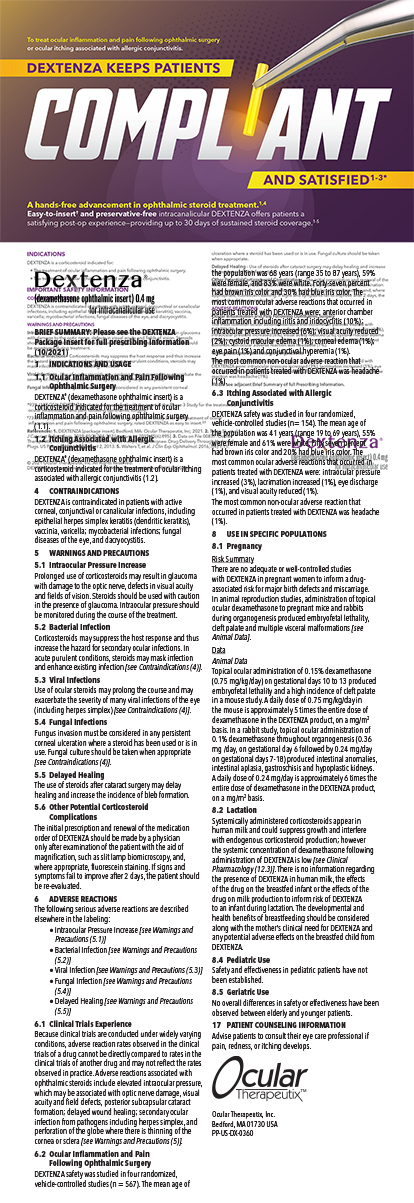
Welcome to another edition of “Ophthalmology 360.” This column is put together by the members of CEDARS (Cornea, External Disease, and Refractive Surgery Society), ASPENS (American Society of Progressive Enterprising Surgeons), and Vanguard Ophthalmology. This month, Dr. Toyos describes an exciting new procedure to enhance her facial rejuvenation practice. We hope you enjoy this discussion.
—Kenneth A. Beckman, MD, section editor

Two years ago, I discovered a tool that has since changed my practice. Not only has the MiXto SX CO2 fractional laser (Lasering USA) has revolutionized not only the way I perform blepharoplasties, but it has also opened the door to a lucrative facial rejuvenation practice. In addition, it offers the most effective and the most natural-appearing nonsurgical facelift currently on the market, in my experience.
In the past, I performed blepharoplasties in the OR with electrocautery (ValleyLab, Covidien), Colorado tips (Stryker), and a running nylon suture. At 10 minutes per lid, the procedures were efficient and streamlined but had room for improvement. Postoperatively, my patients had a fair amount of lid swelling and bruising. These issues were enough for me to prescribe Restasis (cyclosporine emulsion 0.05%; Allergan) routinely for all my patients. Even though I stopped all supplements and potential anticoagulants 2 weeks prior to surgery and was meticulous about cauterizing bleeders, my patients still bruised about half the time. I cautioned patients against “planning family pictures or other events for the first 2 weeks.” In a few cases, bruising was substantial enough to eventually slide down the cheek and into the jaw area. It was typical for wound healing to take 10 days to 2 weeks.
NEW TECHNOLOGY
Introduced in 2005, the MiXto is a fractional CO2 laser designed in Italy. CO2 lasers have long been the gold standard in skin rejuvenation, although limited mostly to Hollywood personalities because of the 3 to 6 months needed to deal with the lengthy postoperative healing process. Early laser procedures had to be performed in the OR under general anesthesia because of the pain, and long courses of opioid pain medications were required. Infections, prolonged redness, and pigment disorders were not uncommon.
MiXto has improved this experience considerably. Reportedly the first CO2 laser to harness the power of continuous-wave technology for the skin, it maximizes the delivery of heat into the skin with a minimum amount of discomfort, downtime, and potential side effects. Re-epithelization takes 1 to 2 days instead of 3 to 6 weeks, which significantly reduces the risk of infection and pigment disorders.1 MiXto resurfacing procedures are performed in the office with topical anesthetics, oral anxiolytics, and pain medications, and incisional blepharoplasties are done with monitored anesthesia care and a local block. I prescribe one Vicodin (acetaminophen and hydrocodone; Abbvie) for sleep on the first night after resurfacing, then nonsteroidal anti-inflammatory drugs during the 7- to 10-day healing process.

Figure. A patient before (A) and after (B) CO2 laser treatment.
HEAT DELIVERY TO THE SKIN
MiXto works better than any other skin-tightening device currently available because of the amount of heat that can be safely and comfortably delivered into the skin.2 The heat tricks the skin into believing that it has been damaged. Then, the body naturally begins to produce new collagen and elastin to tighten the skin, even out the complexion, and reverse the aging process for an entire year.3 It is typical for patients to look 10 years younger and entirely natural in a way that cannot be achieved with a surgical facelift. Results have been documented to be stable at 2 years and anecdotally reported to be stable for 5 years.4
The MiXto can be used in two ways for traditional blepharoplasty: incisional and resurfacing. The device is the only fractional CO2 laser to offer a continuous-wave setting,and a Superpulse setting for incisional blepharoplasty. The laser incisions are associated with less swelling and bruising and more rapid healing times compared to traditional surgery.5 The heat generated with the laser creates better hemostasis compared with erbium laser and electrocautery6,7 and has shaved 3 minutes off my procedural time despite my adopting a more complex lid-suturing technique. My bruising rate has dropped to less than 5%, and that bruise occurred during anesthetic injection.8
In my hands, the incisional technique has been most useful for functional blepharoplasty patients, whereas the resurfacing technique has been useful for patients who prefer to avoid incisions and for cosmetic enhancements of the lower lid. MiXto laser resurfacing is now my favorite way to naturally and easily tighten the periocular skin (Figure). It is safe enough to use up to the upper and lower lid margins. The thin eyelid tissue literally tightens before my eyes, and the resulting collagen eliminates crepiness and all but the worst lower lid bags, in my experience.
The laser has won “Best Nonsurgical Facelift” 3 years running at the Aesthetics Show in Las Vegas. The Wall Street Journal recently described fractional CO2 laser treatment as likely to make facelifts, Botox (onabotulinumtoxinA; Allergan), and Juvederm (hyaluronic acid; Allergan) procedures obsolete with its natural improvements to skin texture and tone.9
CONCLUSION
Ophthalmologists are uniquely situated to capitalize on the potential of the MiXto. Most plastic surgeons and dermatologists correctly avoid the important periocular area when rejuvenating faces due to potentially disastrous side effects. Ophthalmic surgeons can improve their lid procedures and explore the lucrative arena of facial rejuvenation. n
1. Collawn SS. Re-epithelialization of the skin following CO2 laser resurfacing. J Cosmet Laser Ther. 2001;3(3):123-127.
2. Kofford M. Fractional CO2 laser resurfacing in CW and UPup mode: clinical results of traditional CO2 resurfacing in a single treatment, safety advantages of micro-fractional skin resurfacing. Lasers Surg Med. 2010;42(S22)1-125.
3. Kuo T, Speyer MT, Ries WR, Reinisch L. Collagen thermal damage and collagen synthesis after cutaneous laser resurfacing. Lasers Surg Med. 1998;23:66-71.
4. Trelles MA, Garcia L, Rigau J, et al. Pulsed and scanned carbon dioxide laser resurfacing 2 years after treatment: comparison by means of scanning electron microscopy. Plast Reconstr Surg. 2003;111:2069.
5. Rokhsar, CK, Ciocon DH, Detweiler S, Fitzpatrick, RE. The short pulse carbon dioxide laser versus the Colorado needle tip with electrocautery for upper and lower eyelid blepharoplasty. Lasers Surg Med. 2008;40(2):159-164.
6. Lieb WE, Klink T, Munnich S. CO2 and erbium YAG laser in eyelid surgery. A comparison. Ophthalmologe. 2000;97(12):835-841.
7. David LM, Sanders G. CO2 laser blepharoplasty: a comparison to cold steel and electrocautery. J Dermatol Surg Oncol. 1987;13(2):110-114.
8. Toyos MM. Fractional CO2 versus Colorado tip electrocautery for incisional upper eyelid blepharoplasty. Paper submitted to: The International Symposium on Ocular Pharmacology and Therapeutics; June 19-22, 2015; Berlin, Germany.
9. Zelevansky N. Beyond Botox: New anti-aging treatments that will leave you looking like yourself. Wall Street Journal. March 30, 2015.
Melissa Toyos, MD
• private practice in Nashville, Tennesee
• mtoyos@toyosclinic.com
• financial disclosure: speaker for, consultant to, and trainer on
MiXto for Lasering USA


